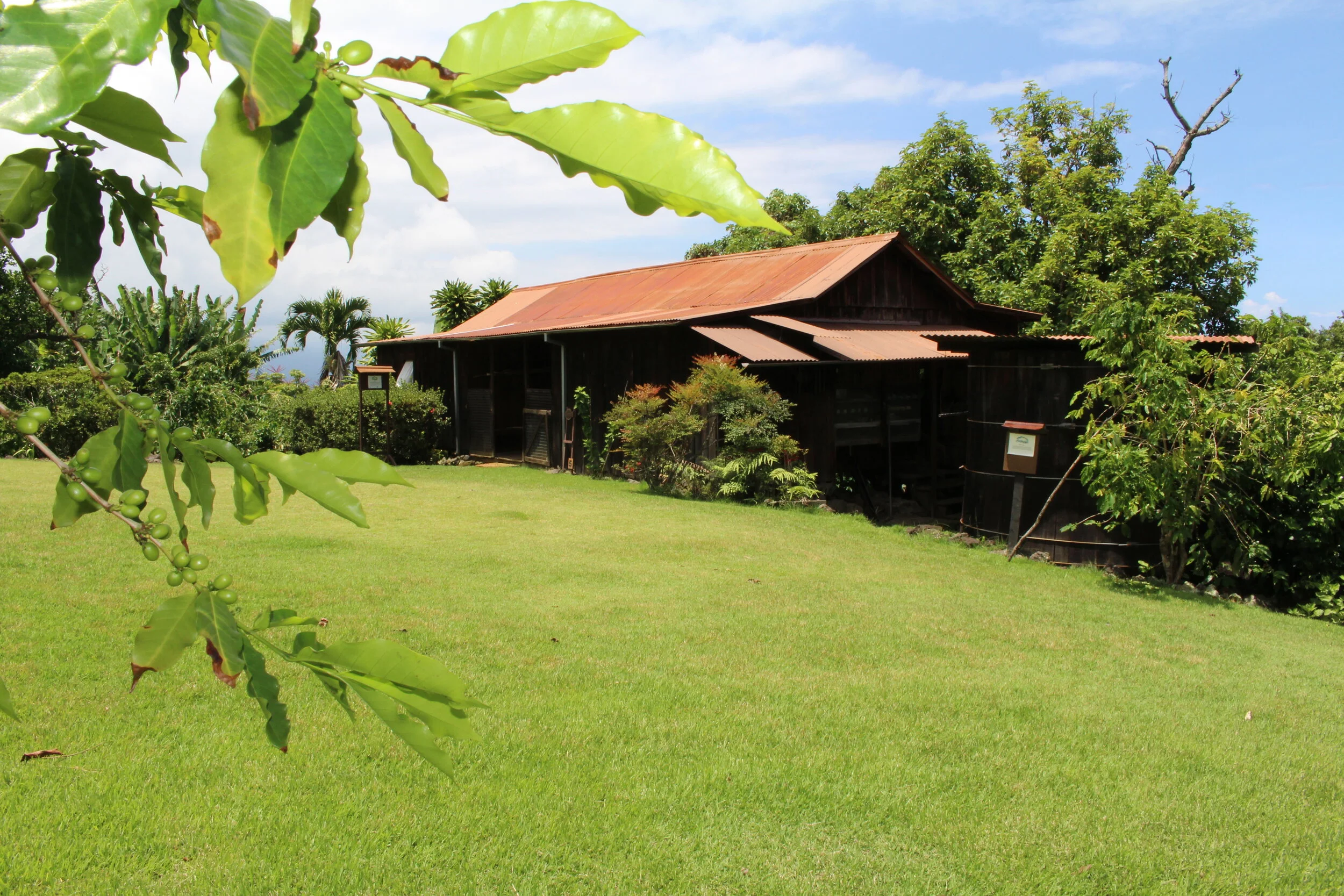Renovation of nearly 100-year-old farmhouse set to begin this summer
By Carolyn Lucas-Zenk, Community Engagement Manager
Every building carries history within its walls, ceilings, floors and foundations. The wood, plaster, metal, stone and other materials can contain useful knowledge and clues, which serve as a thread linking the past and future.
Through an upcoming renovation, the Kona Historical Society is gaining an even greater understanding of the three bedroom, single-wall farmhouse at its Kona Coffee Living History Farm. A Historic Hawaii Foundation grant is helping make this important work possible.
In 1913, Shima and Daisaku Uchida moved and took over the lease to this Captain Cook farm, then owned by the Greenwell family. At that time, the farmhouse was makai of the one seen today.
In 1925, the Uchidas dismantled the old house and used the materials to build the house the public visits today. Since 1994, the Kona Historical Society has owned this farm, which is listed on the State and National Registers of Historic Places.
For nearly a century, this wooden vernacular house, stained dark by time, has stood amid coffee, fruit and macadamia nut trees. Very little repairs and maintenance have occurred over the years, though the house did receive a new corrugated metal roof in 2017 through another Historic Hawaii Foundation grant.
This year, Kona Historical Society plans to use the Historic Hawaii Foundation funding to give the farmhouse some much-needed attention and care, particularly the walls, windows, exterior openings and ceilings. Kona Historical Society will contract a laboratory to test the exterior wall boards for the presence of creosote or other historic waterproofing treatment. The building will also be tested for canec. Often, Issei used canec as a ceiling cover. After World War II, canec replaced the rice bag ceiling in this house, too.
The Society will also identify and replace severely damaged exterior wall boards that may compromise the structural rigidity and/or water-tightness of the single wall system, as well as replace any broken or compromising windows.
Inside the farmhouse, Kona Historical Society plans to replace the damaged goza found in rooms, as well as repair or replace any floorboards compromised by moisture or termites.
Kona Historical Society Programs Director Ku’ulani Auld will oversee this renovation. She looks forward to working with various contractors, including experts in historic preservation, engineering, construction and science. For her, this project enhances the safety of the house and helps ensure its longevity for all, including the next generations who will explore its rooms filled with carefully selected, evocative pieces.
At Kona Historical Society, this house is more than an enchanting time capsule. It is an important educational piece that helps transport Hawaii residents and visitors to a bygone era, igniting their memories, curiosities, imaginations or pride. Buildings like this historic farmhouse contribute substantially to the sense of community and place that makes Kona unique.


